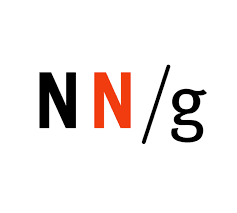
Microsoft Learn
Unlock your early developer potential: post, learn, and connect on Microsoft Learn platform with community challenge.
Clients


Ideation & Design
01 Sketches & Crazy 8
For our design process, we brainstormed the problem statement to prioritize which issues we could address using affinity diagram. We then used the Crazy 8's exercise to generate ideas for solving our users' pain points.



02 Concept Testing

Decision
As a team, we used the Crazy 8's activity we came up with two concepts that best addressed the users' needs. Both concepts were tested with users, who saw benefits in each: one offered a more technical approach, while the other provided a fun and interesting way to ask questions.
We decided with the concept 1 with the 30-day blogging challenge concept due to its practicality, success story from another country (Taiwan) that has similar blogging challenge, and from the survey results from participants.
Overview
MY ROLE
User research, UX design, Prototyping, Video editing
TEAM
1 - UX designer
1 - UX research
1 - Product Designer
1 - Product Manager
Duration
Jan - May 2024
Project Type
AI Themes Capstone Project Sponsored @ Microsoft
What is Microsoft Learn?
Microsoft Learn is an online learning community designed for individuals to explore Microsoft products, access tutorials, participate in classes, courses, and engage in Q&A sessions.

Problem we are facing
“In most online communities, 90% of users are lurkers who never contribute.”

Nielsen Norman Group
More Explain -
Our primary goal is to address the prevalent "lurking" behavior among early career developers, who, despite their initial motivation to join for learning, tend to remain passive observers.
Design Question
Final Solution Video
Research Methodologies

Research Questions

01 User research



02 Persona

How did we get the outcome?

Early Career Developer Community definition based on our User Interviews:
Share knowledge and resources
Similar goal and interests
Support and respect each other
Good rules in the community or moderators
Objective:
Shift from Solo to Community Learning: The framework aims to transition learners from individual, isolated study to a community-based, self-directed learning approach.
Facilitating Self-Directed Learning: Encourage learners to take control of their learning journey while benefiting from the shared knowledge and support of the community.
What We Bring to Microsoft Learn:
Increased adoption of existing features
Introducing current Microsoft resources to enable early career developers to learn
Drives increased adoption and usage of existing features on the platform.
Promoting diversity and inclusion
The Learning Challenge supports Microsoft's values of diversity and inclusion.
It offers a welcoming space for early career developers who may feel excluded elsewhere.
Repurposed user-generated content
Content from early career developers in the Learning Journey Challenge can be featured on Microsoft Learn.
This user-generated content attracts more people to start self-directed learning on the platform.
Strengthening the Microsoft Learn brand
The Learning Journey Challenge enhances the Microsoft Learn brand with its engaging, community-based learning experience.
This leads to increased loyalty, advocacy, and long-term engagement with the platform.
03 User Flow

04 Site Map
A sitemap was created to understand how users will navigate the system. It guided us in structuring the information and determining how features should be implemented.

05 User Testing Key Findings
Based on these 4 sessions of usability testing we iterated on the prototypes by prioritizing based on users concerts and these were the results:
Finding 1
Issue: The introduction page is cluttered with too much information, making it difficult for users to focus on and absorb the key points.
Lack of Visual Hierarchy: The page lacks a clear visual hierarchy, making it hard for users to prioritize information. Without a structured layout that guides the user’s eye to the most important elements first, all content appears equally important, which can confuse users about where to focus.
User Experience: Users can’t easily discern what’s most important on the page. The lack of visual cues means users might miss or overlook critical information that should stand out.

Finding 2
Issue: Themes and tags are both used to categorize and organize content, but they serve different purposes, which can be confusing if not clearly differentiated.
Visual Cues Missing: The interface may not provide enough visual cues or labels to differentiate between the sorts clearly. This makes it hard for users to predict how the list will change when a sort option is selected.
Interface Overlap: If the user interface doesn’t distinctly separate the functionality of themes and tags, users might not understand how to use them effectively. This overlap can make it difficult to select the appropriate sort or filter.

Finding 3
Issue: Confused about how to view prizes again after they have been redeemed.
Visual Indicators: The diagram might show a user interface with no distinct “Redeemed Prizes” section or tab. It could also highlight complex or hidden navigation pathways that users need to take to find their redeemed prizes.
Lack of Visual or Interactive Cues: Without clear icons, buttons, or links that explicitly point to where redeemed prizes can be viewed, users are left guessing. The absence of such cues can make the interface feel unintuitive and frustrating.

Iteration Outcome

Time-Bound Learning Sprints
Focusing on learning specific Microsoft products, technologies, or skills in 7, 21, or 30 days, enhancing programming abilities.

Shared Learning Experience
Allowing peers to share their learning on the same topic, reducing the fear of judgment and fostering a sense of community and belonging.

Emphasis on Novice Insights
Valuing beginner contributions to create a more inclusive atmosphere.

Gamified Experience
Maintaining motivation with daily check-ins, points, rewards, and the article posting challenge.

Mentorship Opportunities
Connecting with Microsoft experts and other experienced developers for guidance, enhancing learning and building confidence.
05 Design System












